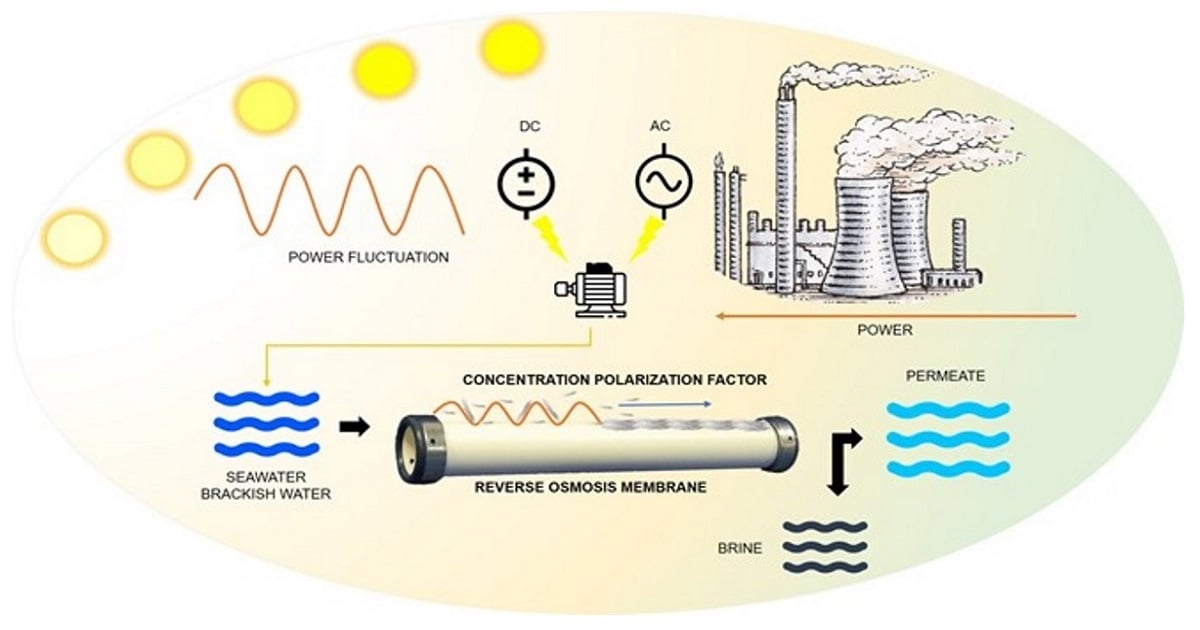- 2.8Impact Factor
- 5.5CiteScore
- 16 daysTime to First Decision
Control and Supervision Strategies on Desalination Processes: Focused on Key Process Variables
This special issue belongs to the section “Process Control and Monitoring“.
Special Issue Information
Dear Colleagues,
The accelerated population growth and industrialization present around the world during the last decades have significantly increased the demand for resources; therefore, it is becoming more difficult to meet the basic needs of human beings, limiting the availability of drinking water, food, and electrical energy. Although water covers most of the Earth, only about 2.5% of it is available as fresh water. However, the percentage of fresh water available for consumption is much lower because nearly three-quarters of this resource is frozen in glaciers and ice caps, making its use in the short term practically impossible. It is estimated that by 2030 there will be a 40% water deficit worldwide.
Desalination technologies appear to be an attractive solution to satisfying part of the global water shortage. Desalination consists of taking water with a high concentration of total dissolved solids (TDSs) and passing it through a treatment process until it reaches the appropriate concentration ranges for its respective use. In order to obtain fresh water through desalination, two types of systems can be used, which are categorized as thermal and membrane systems. The latter system separates the feed water into two streams, one of water with low concentration— called permeate—and another with the concentrate of the rejected salts—called rejection. Within this category of membrane desalination systems, the most used technology is reverse osmosis (RO).
In this Special Issue, we want to delve deeper into certain factors that require special attention during the RO process. One of these factors is the so-called concentration polarization factor, which causes a series of phenomena that affect RO membranes directly and, consequently, the quality of the product water and the energy consumption of the process. The concentration polarization occurs when, as feed water flows through the RO system, salts are retained by the semipermeable membrane and form a concentrated layer on its surface. The concentration at this point gradually increases because as the water flow continues to pass through the membranes, salts continue to accumulate, causing an even higher concentration than the inlet concentration: scaling. This phenomenon limits mass transfer in the process, causing an increase in operating pressure, energy consumption, and scaling formation. It also decreases the quality and flux of the permeate. The challenges are broad, including energy demand and supply, use of renewable energies in desalination, intermittent operation, capacity development of personnel, operation and maintenance, water quality, intakes and outfalls, environmental impact and mitigation actions, case studies, pre-treatment, reverse osmosis, funding and costs, etc.
Prof. Dr. German Eduardo Devora
Dr. Jesús Álvarez-Sánchez
Guest Editors
Manuscript Submission Information
Manuscripts should be submitted online at www.mdpi.com by registering and logging in to this website. Once you are registered, click here to go to the submission form. Manuscripts can be submitted until the deadline. All submissions that pass pre-check are peer-reviewed. Accepted papers will be published continuously in the journal (as soon as accepted) and will be listed together on the special issue website. Research articles, review articles as well as short communications are invited. For planned papers, a title and short abstract (about 250 words) can be sent to the Editorial Office for assessment.
Submitted manuscripts should not have been published previously, nor be under consideration for publication elsewhere (except conference proceedings papers). All manuscripts are thoroughly refereed through a single-blind peer-review process. A guide for authors and other relevant information for submission of manuscripts is available on the Instructions for Authors page. Processes is an international peer-reviewed open access monthly journal published by MDPI.
Please visit the Instructions for Authors page before submitting a manuscript. The Article Processing Charge (APC) for publication in this open access journal is 2400 CHF (Swiss Francs). Submitted papers should be well formatted and use good English. Authors may use MDPI's English editing service prior to publication or during author revisions.
Keywords
- reverse osmosis
- concentration polarization factor
- biofouling
- permeate flux
- mass transfer coefficient
- process design
- perfomance
- seawater reverse osmosis (SWRO)
- brackish water reverse osmosis (BWRO)
- operating pressure
- energy consumption

Benefits of Publishing in a Special Issue
- Ease of navigation: Grouping papers by topic helps scholars navigate broad scope journals more efficiently.
- Greater discoverability: Special Issues support the reach and impact of scientific research. Articles in Special Issues are more discoverable and cited more frequently.
- Expansion of research network: Special Issues facilitate connections among authors, fostering scientific collaborations.
- External promotion: Articles in Special Issues are often promoted through the journal's social media, increasing their visibility.
- e-Book format: Special Issues with more than 10 articles can be published as dedicated e-books, ensuring wide and rapid dissemination.

